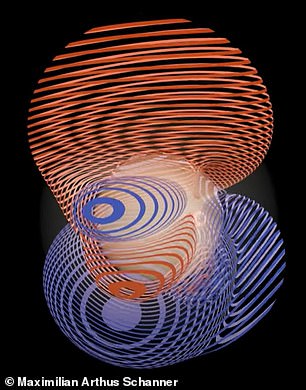
Eerie Echoes of Earth’s Ancient Polar Flip Reveal Imminent Magnetic Field Reversal Threat
Earth’s Magnetic Pole Reversal: A Symphony of Chaos
Every 200,000–300,000 years, Earth’s magnetic poles perform a dramatic flip, swapping north and south. The last full reversal occurred 780,000 years ago, leading scientists to speculate another might be overdue. Researchers have now transformed the chaos of this geological phenomenon into a haunting musical “soundscape” using paleomagnetic data from ancient rocks.
The Sound of a Flipping Planet
A team from Germany’s Helmholtz Centre for Geosciences converted magnetic field fluctuations before, during, and after the Matuyama-Brunhes reversal—the last major pole flip—into music. Using three violins and three cellos, they mimicked the transition from stability to chaos. The piece begins harmoniously, reflecting Earth’s calm magnetic field, but dissolves into a disharmonic cacophony as the poles destabilize.
[Image: Animation showing Earth’s magnetic field in stable (left) vs. scrambled (right) states]
Why Earth’s Magnetic Field Matters
Generated by molten iron in Earth’s core, the magnetosphere shields life from harmful solar radiation. During a reversal, this protective layer weakens over centuries, potentially disrupting power grids, satellites, and navigation systems. Compasses would point south, and regions like Antarctica might shift to the northern hemisphere. While solar radiation exposure would rise, experts say mass extinctions are unlikely—past reversals left no clear evidence of catastrophic harm.
[Image: Artist’s impression of Earth’s magnetosphere deflecting solar particles]
Prehistoric Clues and Modern Warnings
The Laschamp event, a temporary geomagnetic shift 41,000 years ago, weakened Earth’s magnetic field to 5% of its current strength. Scientists recreated its sounds using satellite data, blending creaking wood and falling rocks to evoke the turmoil. Today, the South Atlantic Anomaly—a growing weak spot over Brazil—has raised concerns. Satellites malfunction here due to heightened solar particle exposure, sparking fears of an imminent flip.
[Image: Comparison of Earth’s modern magnetic field vs. 600 BCE]
Will the Poles Flip Soon?
Despite alarming signs, Lund University researchers analyzed 9,000 years of data, concluding that the South Atlantic Anomaly is likely a recurring fluctuation, not a reversal trigger. “Earth isn’t heading toward a polarity reversal,” says geologist Andreas Nilsson. The anomaly may even dissipate within 300 years. Historical volcanic samples and sediment cores reveal similar past fluctuations followed by recovery.
Living Through a Flip
A full reversal would challenge technology, not life itself. Power grids could fail, and radiation levels might rise slightly, but humans weathered past reversals without disaster. Navigation systems and some wildlife relying on magnetic fields would adapt gradually.
[Image: Satellite view of Earth highlighting the South Atlantic Anomaly]
The Bottom Line
While magnetic pole reversals inspire apocalyptic scenarios, science offers reassurance. These events unfold over millennia, allowing life—and modern technology—time to adjust. As researchers decode Earth’s geomagnetic past, their work reminds us of our planet’s resilience amid its ever-shifting dynamics.
Featured Images: (1) Stable vs. scrambled magnetic field animation, (2) Earth’s magnetosphere deflecting solar wind, (3) Geomagnetic field comparison over time.
(Word count: ~600)


